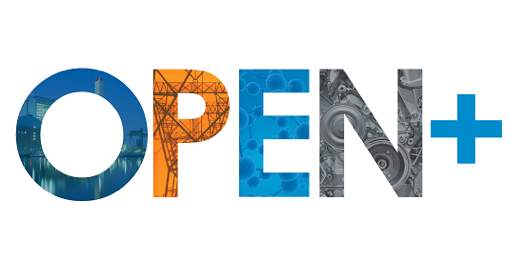
ARPA-E Announces $12 Million for Five Projects in Nuclear Materials Science
Follow-up to ARPA-E’s OPEN 2018 Program Seeks to Improve Nuclear Technologies through Advanced Materials Design
WASHINGTON, D.C. – Today, the U.S. Department of Energy’s Advanced Research Projects Agency-Energy (ARPA-E) announced $12 million in funding for 5 projects as part of its first-ever OPEN+ program. Inspired by the high quality of applications in the agency’s recent OPEN 2018 funding opportunity, this first cohort will focus on ways to enable advanced nuclear energy by overcoming challenges in high performance materials science.
Traditionally, ARPA-E OPEN solicitations issue an open call to scientists and engineers for transformational technologies across the entire scope of ARPA-E’s energy mission. The agency decided to create the OPEN+ cohorts—drawing from the large and impressive OPEN 2018 applicant pool—to focus on particular topics in energy where ARPA-E sees significant opportunities to innovate and create new communities.
“We received over 2,500 concept papers in response to the OPEN 2018 funding opportunity announcement,” said Dr. Patrick McGrath, ARPA-E’s Deputy Director for Technology, who led the OPEN merit review process. “The quality of proposals was exceptional, and in looking through the research ideas, we found a number of projects that were naturally grouped around some common goals and themes. This led to the creation of OPEN+ cohorts.”
ARPA-E plans to announce a total of nine OPEN+ cohorts throughout late 2018 and early 2019.
The complete list of OPEN+ advanced nuclear projects can be found below and here.
Selected examples of the new projects are below:
Additive Manufacturing of Spacer Grids for Nuclear Reactors
Carnegie Mellon University | Pittsburgh, PA | $1,000,000
Carnegie Mellon will combine its expertise in additive manufacturing (AM) with Westinghouse’s knowhow in nuclear reactor component fabrication to develop a novel design and AM process for nuclear reactor spacer grids. Spacer grids are used to provide mechanical support to nuclear fuel rods within a reactor and reduce vibration, and they are a particularly difficult component to manufacture. The team will alter the traditional AM process, including utilizing nonstandard powders to optimize performance and reduce cost. Because of the difficulty of printing spacer grids, the impact would be significant if the team is successful – it could pave the way for other reactor components to be additively manufactured. The ability to cost effectively manufacture nuclear reactor components using AM could help enable the rapid deployment of advanced reactors.
MEMS RF Accelerators for Nuclear Energy and Advanced Manufacturing
Lawrence Berkeley National Laboratory | Berkeley, CA | $3,600,000
Lawrence Berkeley National Laboratory, in collaboration with Cornell University, will use advanced microfabrication technology to fabricate and scale low-cost, high-power multi-beam ion accelerators. The team will pack hundreds to thousands of ion beamlets on silicon wafers. Ions will be injected and accelerated across the gaps formed in stacks of wafers, leading to high-current densities for ion accelerators. Ion beams can be used to generate neutrons for nuclear materials testing and several high-value manufacturing processes, but they are currently prohibitively expensive. Low-cost, flexible, and scalable ion accelerators could enable the rapid development of advanced nuclear energy materials and new applications in manufacturing.
Advanced Manufacturing of Embedded Heat Pipe Nuclear Hybrid Reactor
Los Alamos National Laboratory | Los Alamos, NM | $3,552,295
Los Alamos National Laboratory will develop a scalable, compact, high-temperature, heat pipe reactor (HPR) to provide heat and electricity to remote areas. The team will enable the use of high temperature materials via advanced manufacturing to reduce costs. A 15MWth reactor could be built on-site in less than a month and self-regulate its power to plug into microgrids. Further cost reduction will be achieved from novel sensors embedded in the reactor core for continuous monitoring, reducing the number of operational staff needed. The novel design could eliminate obstacles to nuclear deployment, including cost uncertainty and hybrid integration.
Multimetallic Layered Composites (MMLCs) for Rapid, Economical Advanced Reactor Deployment
Massachusetts Institute of Technology | Cambridge, MA | $1,694,034
The Massachusetts Institute of Technology (MIT) team will develop multimetallic layered composites (MMLCs) for advanced nuclear reactors and assess how they will improve reactor performance. Rather than seeking complex alloys that offer exceptional mechanical properties or corrosion resistance at unacceptable cost, this team will develop materials with functionally graded layers, each with a specific function. The team will seek general design principles and engineer specific MMLC embodiments. The materials developed will be tested using irradiation experiments, coupled with predictive models for performance under irradiation. To date, the issue of material performance at low cost has proved a challenge for advanced reactor deployment. Developing a scalable method of materials manufacturing and testing for advanced nuclear reactors could facilitate their rapid deployment and thereby reduce energy-related emissions and improve energy efficiency.
Accelerated Materials Design for Molten Salt Technologies Using Innovative High-Throughput Methods
University of Wisconsin-Madison | Madison, WI | $1,861,820
The University of Wisconsin-Madison is developing new materials that are resistant to molten salt corrosion to enable promising molten salt technologies used in advanced nuclear reactors, concentrated solar power, and thermal storage. This project would combine advances in additive manufacturing, robust in-situ testing for materials/salt compatibility, new molten salt-resistant mini-electrode designs, and machine learning and algorithms to optimize and accelerate molten salt corrosion-resistant materials discovery. This new integrated toolset could expedite materials development for molten salt technology by two orders of magnitude compared to state-of-the-art technologies.
